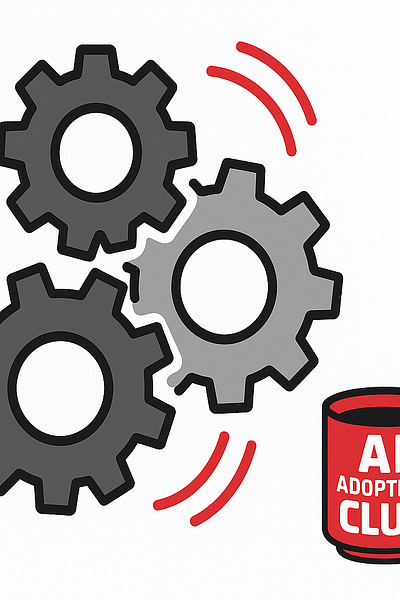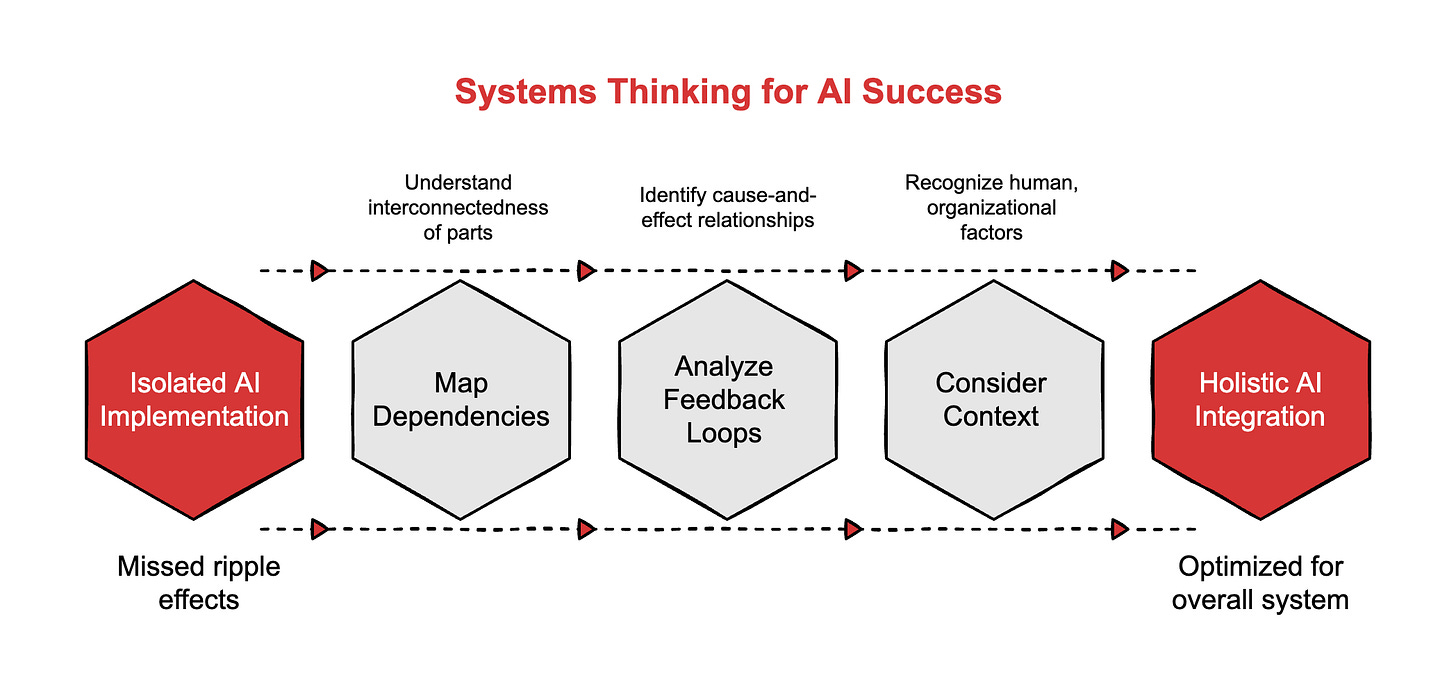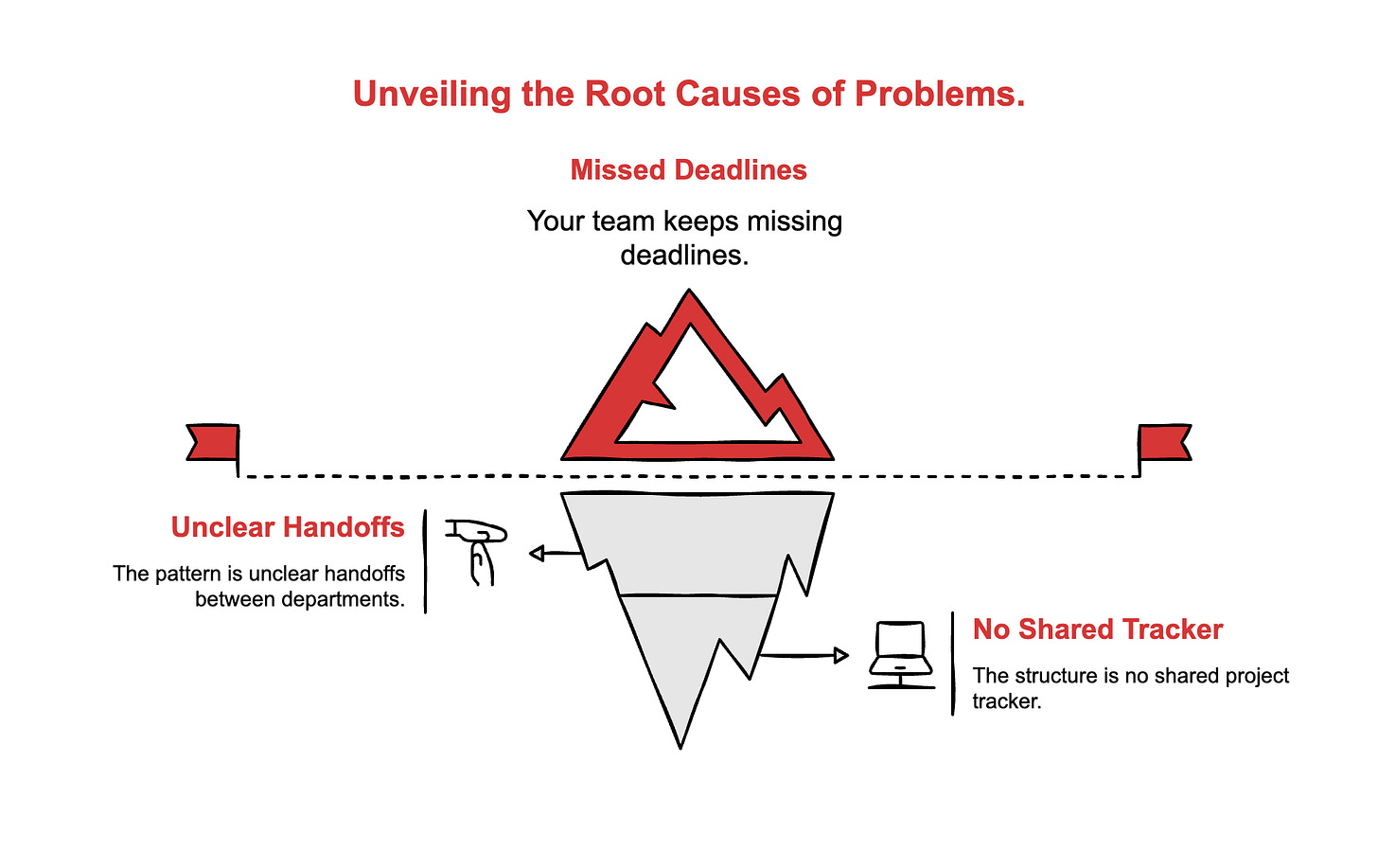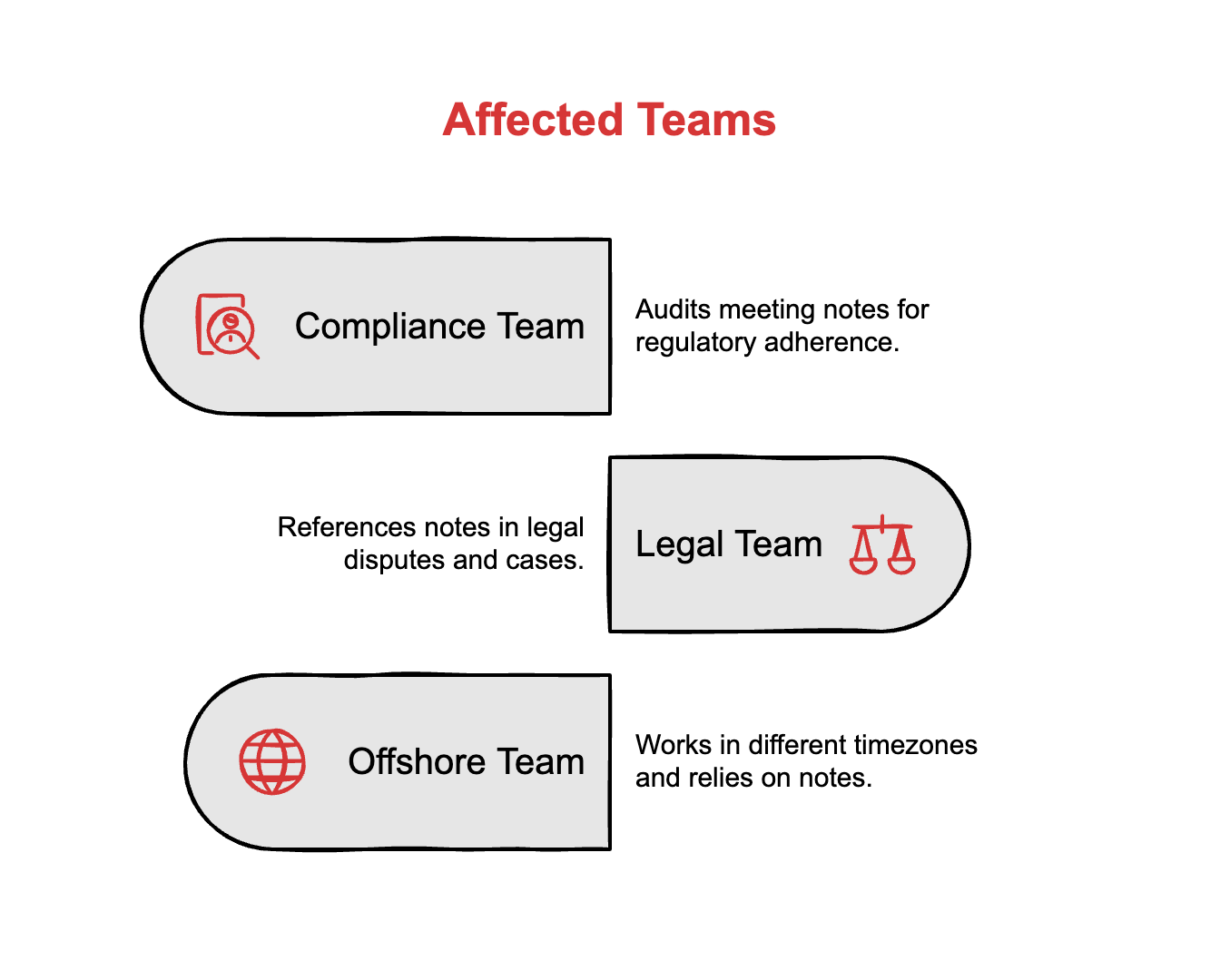Systems thinking makes your AI skills actually useful
Most professionals chase prompts. The ones who advance see the connections AI misses.
Hey Adopter,
AI projects fail at predictable rates. One skill separates teams that ship from teams that stall.
The pattern hiding in plain sight
Amazon’s hiring algorithm collapsed because engineers optimised for historical patterns without mapping how those patterns formed. Starbucks cut wait times without hiring more staff by mapping customer flow, employee movement, and equipment placement as one connected system. Same tools. Different lens.
Systems thinking is the ability to see how parts influence each other and create feedback loops. It prevents narrow optimisation mistakes. When you automate a process without mapping dependencies, you shift work somewhere else. Marketing gets buried in requests. Support inherits edge cases. IT maintains three versions of the same workflow.
AI systems operate inside complex human, organisational, and operational contexts. Treat them as isolated tools and you miss the ripple effects.
Next: what this looks like when it works.
How Starbucks fixed queues without adding headcount
Starbucks faced long queues and stressed employees during peak hours. The obvious fix was more baristas. They mapped the system instead.
Customer flow, employee roles, menu complexity, and technology all connected. Custom drink requests created bottlenecks. Baristas walked too far for supplies. The order system and preparation workflow ran in parallel, not sequence.
They simplified menu layouts, repositioned equipment based on movement patterns, and added order-ahead capability. Shorter wait times. Higher sales per hour. Happier staff.
The lesson: small targeted fixes in the right places produce system-wide improvements. AI follows the same principle. Automate the wrong task and you amplify dysfunction. Automate the leverage point and the whole system improves.
Which leaves one problem: how do you build this skill when your calendar is full?
Three exercises that fit in 30 minutes
Start small. Systems thinking develops through practice, not theory.
The iceberg model
When a problem surfaces, ask what’s beneath it. Symptoms sit on top. Patterns run deeper. Structures cause patterns.
Your team keeps missing deadlines. That’s the symptom. The pattern is unclear handoffs between departments. The structure is no shared project tracker. Use this during retrospectives or standups to shift from firefighting to root cause.
Process mapping on paper
Pick one workflow. Draw every step and stakeholder. Add arrows for dependencies. Include indirect impacts.
Onboarding a new client touches sales, legal, finance, delivery, and support. Each handoff creates delay risk. Even a messy map reveals bottlenecks and feedback loops you miss in sequence thinking.
The “who else gets affected?” question
Before implementing a change, ask this once. Stop there if you’re pressed for time. Ask it three times if you have slack.
AI summarises meeting notes for your team. Who else gets affected? The compliance team that audits those notes. The legal team that references them in disputes. The offshore team working in a different timezone. One question surfaces dependencies you’d find later, when they break.
You get faster pattern recognition. Here is where the books help.
Two books worth your time
Thinking in Systems: A Primer by Donella Meadows gives you the foundations in clear language. Real examples, no academic jargon.
Systems Thinking Made Simple by Derek and Laura Cabrera breaks it into four rules with practical exercises. DSRP: Distinctions, Systems, Relationships, Perspectives. Simple enough to apply tomorrow.
Both under 300 pages. Both teach you to spot leverage points where small changes multiply results.
Why this matters more than prompt engineering
AI amplifies what you feed it. Feed it isolated tasks and it delivers isolated outputs. Feed it mapped dependencies and it suggests improvements across the system.
Systems thinking helps anticipate ripple effects, avoid unintended consequences, and design solutions that align with broader organisational contexts rather than just technical optimisation. Your boss cares about the second part.
Professionals who map systems become indispensable because they prevent expensive mistakes before they ship. Consultants who map client systems close projects because they demonstrate understanding beyond the tool.
Start with the iceberg model this week. Map one workflow next week. Ask “who else gets affected?” in your next project review. Systems thinking builds through repetition, not revelation.
Adapt & Create,
Kamil









Seeing the entire system and moving parts allows for a holistic approach in pursuing projects, especially AI implementation ones. I am currently in the midde of one :)
Immediately after watching the video and skimming thought newsletter I needed to subscribe.
I see the work you put it, the video is great and presentation is great. Thanks for all of this.